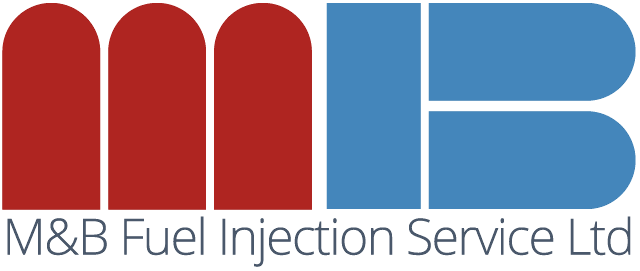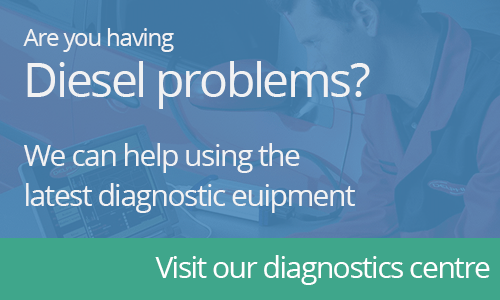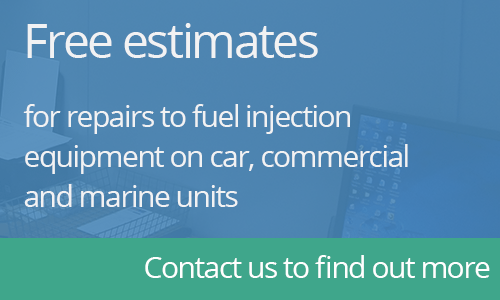Our electrician has created a case study explaining the repair of a water damaged starter motor
Most jobs are pretty straightforward, so long as you know what you’re doing. The marine environment however, can throw up some nasty challenges. Look at the corrosion in the boat starter motor pictured.
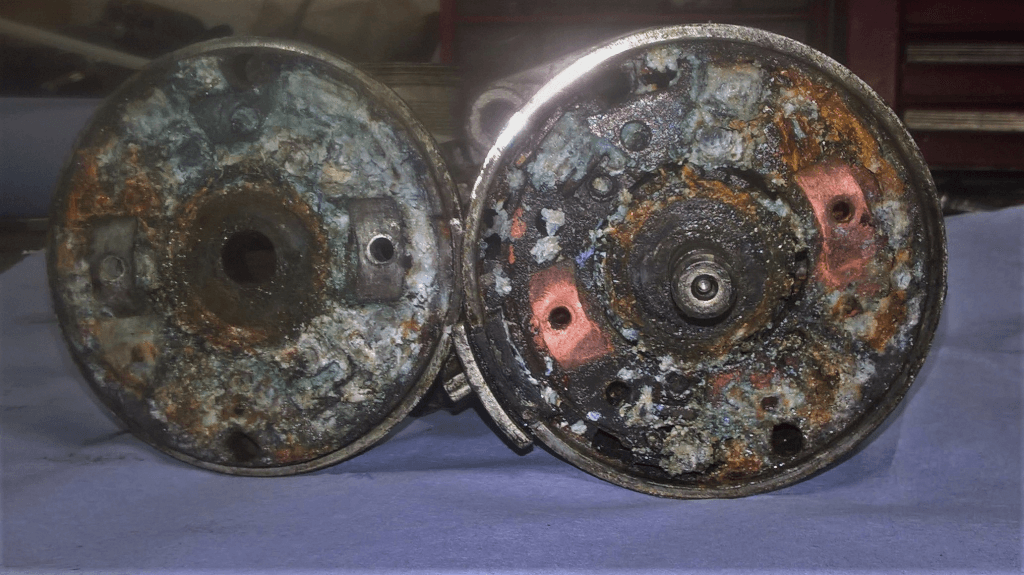
Somewhere in there is a brush gear assembly and the commutator. The other end is little better.
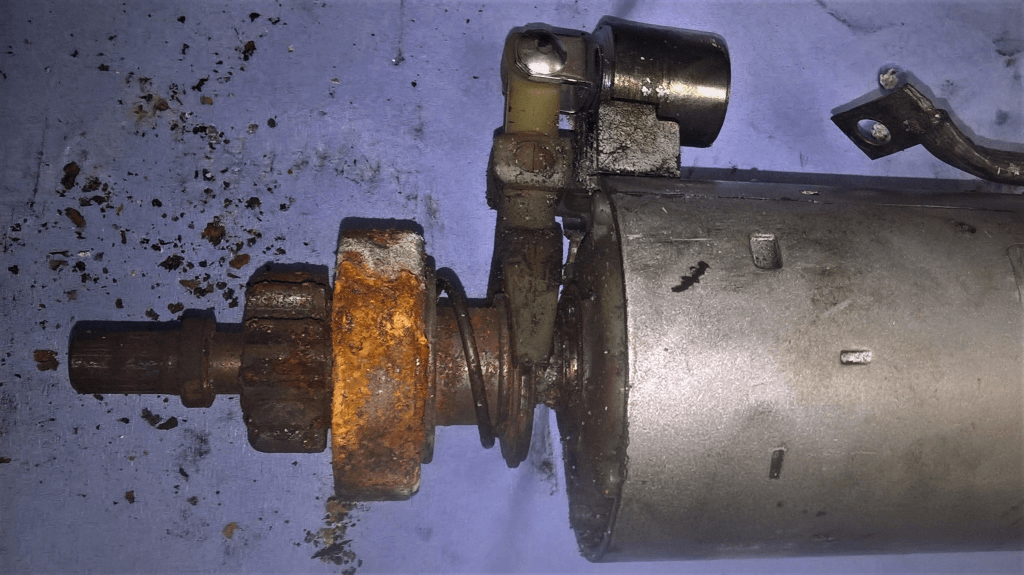
That drive assembly has a roller clutch inside and it doesn’t look like we can be too confident that the roller springs have not rusted through.
Let’s take a look at the middle.
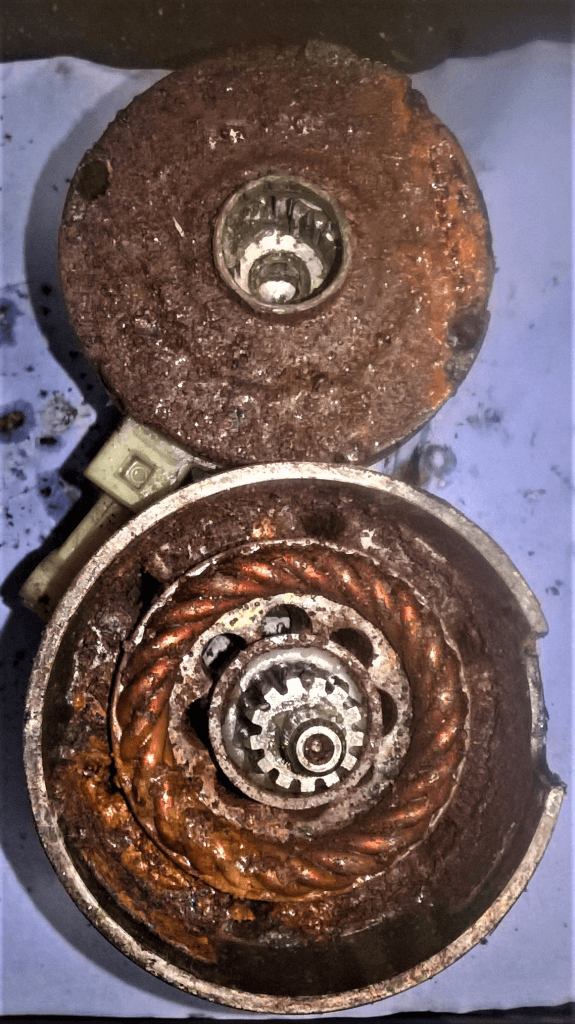
Looking at that it’s clear that the interior of the reduction gear, visible through the hole in the centre of the cover plate, has had a remarkable escape and is relatively corrosion free. The plate itself however is a different story and looking into the motor itself shows a large growth of rust which has attacked the inside of the yoke assembly (the main body of the motor), got behind the magnets and separated them from the yoke. The armature is also effected and has an earth fault.
Here’s the front of the drive shaft under a magnifier.
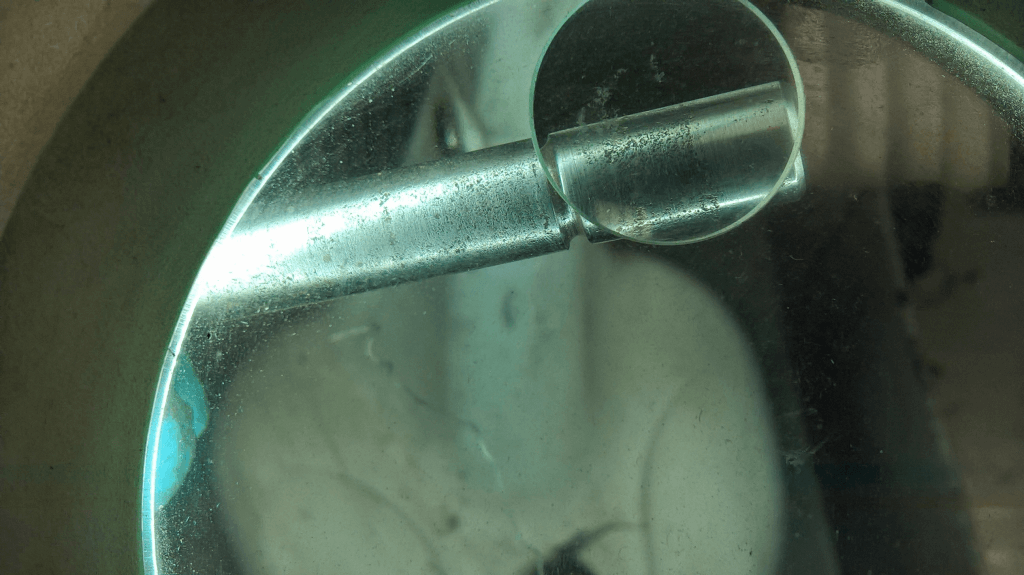
It can be seen that the shaft shows serious pitting on the bearing surface which would fairly quickly demolish a new needle roller bearing.
All in all then this starter motor has been ruined, not by wear over a long working life but by the ferocious effects of even a little salt water in the presence of electric current. So what to do about it?
Well a replacement starter is really rather expensive, which is academic because no one has stock anyway! The unit is obsolete and parts no longer available.
So, first the parts are thoroughly cleaned by solvent degreasing followed by vapour blasting, this removes all traces of corrosion. The armature was then baked and reinsulated and the earth fault eradicated. The brush holder assembly has been replated with a thick coat of zinc for future protection and all metal surfaces treated with a specialist varnish which not only coats the metal but inhibits electrolytic effects. New brushes have been accurately cut from larger brushes from the same manufacturer to guarantee the correct compound.
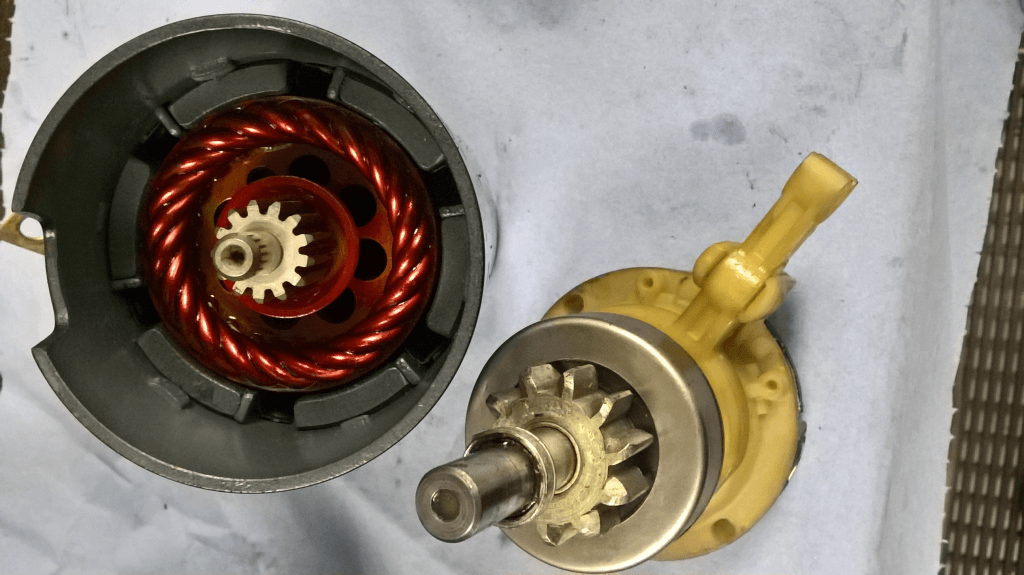
That rusty drive assembly was stripped down and subjected to the same cleaning regine and sure enough the springs were rusted and replaced, the parts then finished as required and reassembled with a new cap from a different manufacturer adapted to fit. The magnets were removed from the yoke and again cleaned and a series of coatings and plating applied.
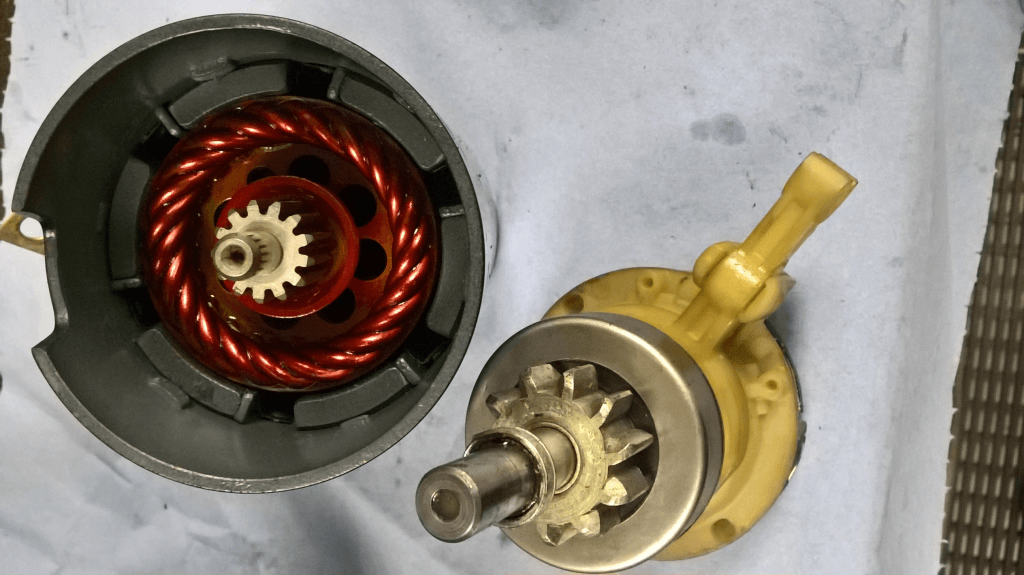
In that last picture that pitted shaft can be seen again. Now however, the pits have been filled by fresh metal deposited electrolytically and polished back to the correct dimension to take a new bearing.
Fully assembled with new fastenings the unit now works and passes torque test, ready for a new working life.
That was an awful lot of work, and whilst all our marine units are built to the same standard, it is not usually so problematic obtaining new parts and so unnecessary to spend so much time raising the dead! This does however demonstrate that how ever awful the outlook, we’re on top of it.
